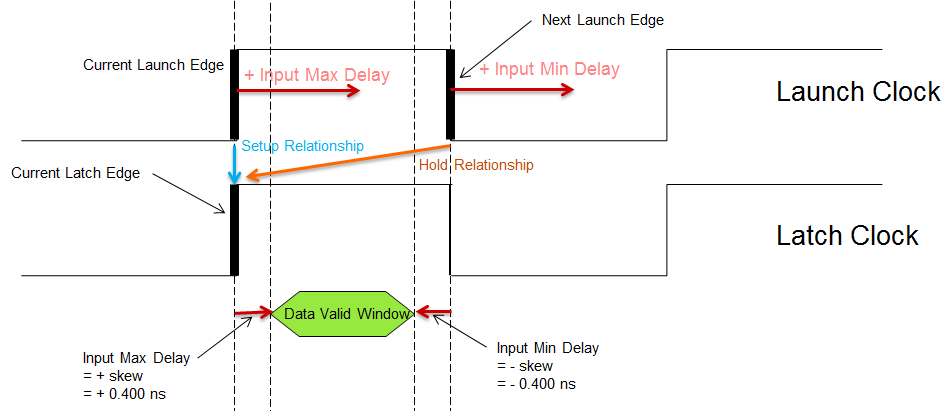Visible to Intel only — GUID: sam1412661924268
Ixiasoft
ALTDQ_DQS2 Features
ALTDQ_DQS2 Device Support
Resource Utilization and Performance
ALTDQ_DQS2 Parameter Settings
ALTDQ_DQS2 Data Paths
ALTDQ_DQS2 Ports
Dynamic Reconfiguration for ALTDQ_DQS2
Stratix V Design Example
Arria V Design Example
IP-Generate Command
ALTDQ_DQS2 IP Core User Guide Archives
Document Revision History
I/O Configuration Block Bit Sequence for Arria V GZ and Stratix V Devices
DQS Configuration Block Bit Sequence for Arria V GZ and Stratix V Devices
I/O Configuration Block Bit Sequence for Arria V and Cyclone V Devices
DQS Configuration Block Bit Sequence for Arria V and Cyclone V Devices
Example Usage of Dynamic Reconfiguration for ALTDQ_DQS2
Visible to Intel only — GUID: sam1412661924268
Ixiasoft
SDC Walkthrough
To create a new .sdc, follow these steps:
- Constrain the clocks coming into the FPGA with the create_clock command. The following command creates the base clock for the input clock port driving the PLL:
create_clock -name refclk -period 10.000 [get_ports {refclk}]
- Create the generated clocks for the PLL with the following command:
derive_pll_clocks
- Constraint the virtual input clock (for incoming DQS strobe) and the strobe_in port. ln this design example, it is based on a 200 MHz input clock, with a 50% duty cycle, where the first rising edge occurs at 0 ns.
create_clock -name virtual_dqs_in -period 5.000
create_clock -name dqs_in -period 5.000[get_ports {strobe_in}]
- lncoming data is edge-aligned to the DQS strobe, and the minimum and maximum input delay is assumed to be ± 0.4 ns in this design example. You must modify constraints to reflect the data and clock relationship in the system. Use the -add option to add the your delay constraint instead of overriding previous constraints.
set_input_delay -clock {virtual_dqs_in} -max -add_delay 0.400 [get_ports {read_write_data_io[*]}]
set_input_delay -clock {virtual_dqs_in} -min -add_delay -0.400 [get_ports{read_write_data_io[*]}]
set_input_delay -clock {virtual_dqs_in} -clock_fall -max -add_delay 0.400 [get_ports {read_write_data_io[*]}]
set_input_delay -clock {virtual_dqs_in} -clock_fall -min -add_delay -0.400 [get_ports {read_write_data_data_io[*]}]
Figure 43. Input Delay Timing Analysis
